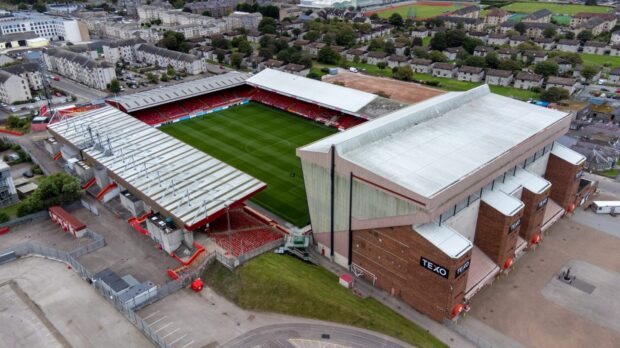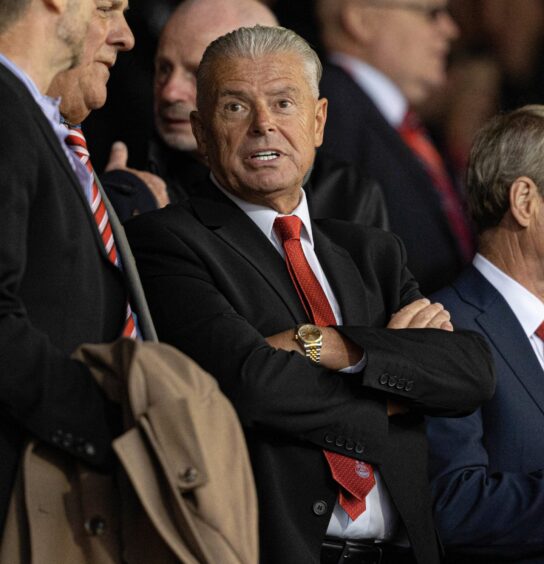There is a lot to be happy about if you are an Aberdeen fan right now.
Level with leaders Celtic at the top of the table, another trip to Hampden for a cup semi-final beckons, the football being played is great, and the club are on a strong financial footing.
But despite all that, it is growing increasingly hard to ignore the fact Aberdeen’s stadium saga is now hampering the club’s long-term plans for progress.
It sounds like a daft statement when, on and off the field, the Dons are in rude health.
Commercially, the club are thriving – Dons chairman Dave Cormack said as much in his announcement he was stepping away from social media three weeks ago.
He wrote: “We’ve doubled our partner income over the last few seasons.
“The player-trading model, which means we plan to invest much more each season than our income from season tickets, retail etc, will have its ups and downs.
“This strategy is being underwritten by the board. And today we have no bank debt.”
How frustrating must it be then, a club who were in Europe last season, reach cup finals on a regular basis, have a thriving youth academy and are currently on an 11-game winning streak under their new manager, still have potential investors shying away?
The answer has to be the ongoing stadium issue.
Dons should be a prime investment opportunity
There has been much coverage given to Brighton and Hove Albion owner Tony Bloom’s interest in investing £10million in Hearts in the past couple of weeks.
He is keen on adding a stake in the Jambos to his football portfolio which also includes Brighton and Belgian side Union Saint-Gilloise.
Bloom’s interest follows a significant investment across Edinburgh earlier this year.
Hibernian accepted a £6million investment in February from Bournemouth chairman Bill Foley and the Black Knight group for a 25% stake.
Bloom, who also showed an interest in Dundee United, brings access to Starlizard – the data-led approach which has been utilised to great effect at the two clubs just mentioned.
The chance to make it a hat-trick with a Scottish club, and the challenge of trying to take on the Old Firm duopoly on the game, means Bloom’s eyes are looking towards Tynecastle.
But it is understood the Dons were in his thoughts earlier this year, too. However, the stadium was one reason his interest quickly moved on.
Aberdeen’s stadium saga needs to come to an end
There’s no sugar-coating this – Aberdeen’s years-long plan to relocate from Pittodrie continues to move at a snail’s pace.
Council invitations to get involved in masterplans seem to hinge on which administration is in charge.
But delay after delay has left the Dons dangling in the wind, and chairman Cormack and his board of directors hugely frustrated.
If you an outsider looking at Aberdeen, all the ingredients are there to make the Dons an attractive investment opportunity – with one exception.
It is no secret Aberdeen want a new stadium. The Dons hierarchy would tell you they need to move.
As good as Aberdeen’s increased revenues are, the Dons are coming very close to a glass ceiling on that front.
For the Dons supporters, until such time as ground is broken and construction, any update on the stadium is treated with a collective shrug of the shoulders.
For potential investors, the uncertainty will keep those who are risk averse from getting involved.
Aberdeen, meanwhile, are resigned to watching rivals get stronger financially by attracting serious investment.
The Dons are doing quite nicely on their own at this stage, of course, but it does make you wonder what appeal a team of Aberdeen’s history and stature, with a shiny new stadium to boot, would hold for investors.
Maybe one day we’ll get the answer to that question. But it is clear another more pressing question needs to be answered first.



Conversation